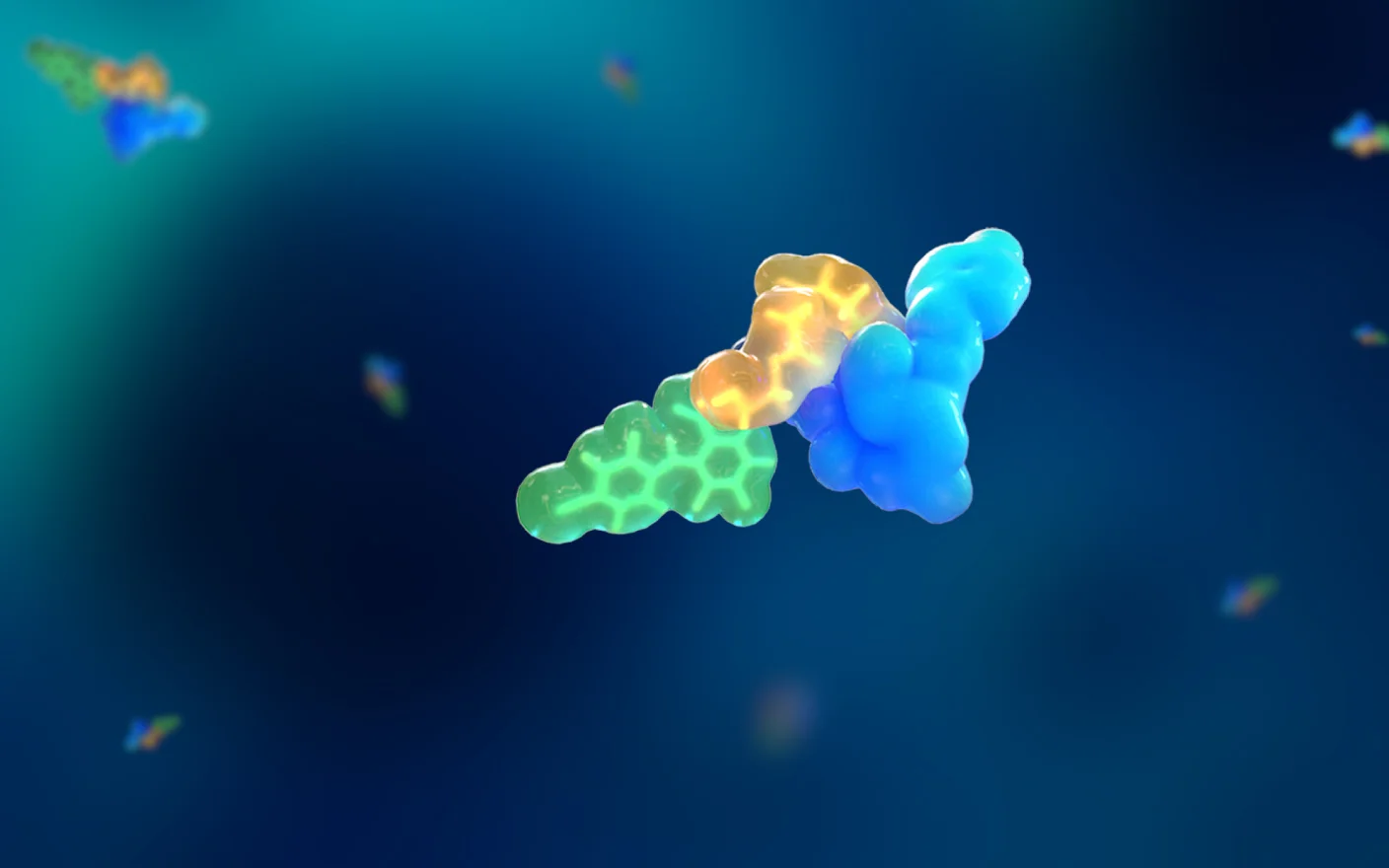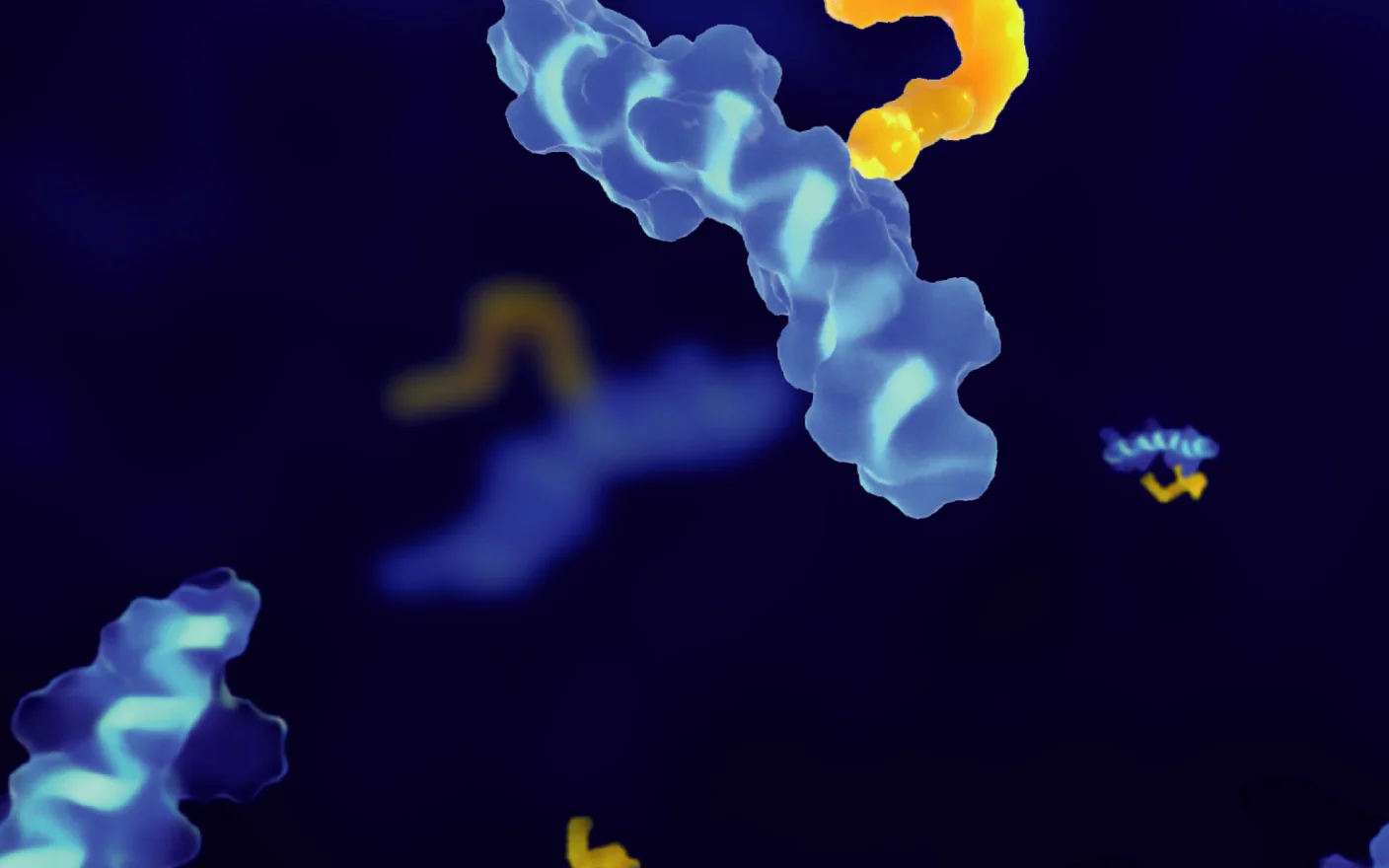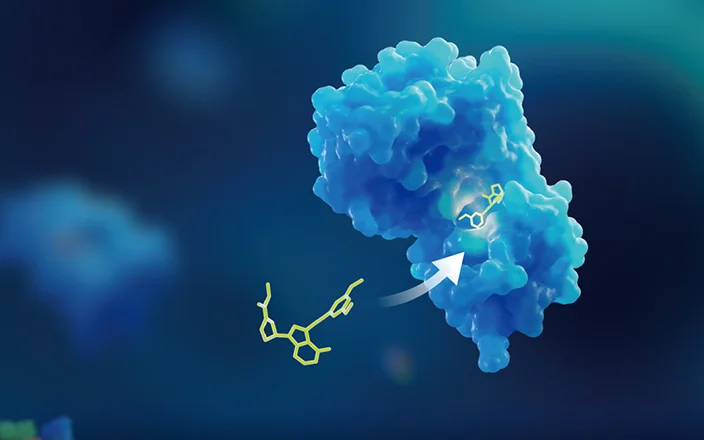With the rapid development of the biopharmaceutical industry, an increasing number of peptide drugs are being developed for the treatment of various diseases. However, due to the poor oral bioavailability of peptides, most require injection, which reduces patient compliance—especially for conditions requiring long-term treatment. Oral administration is the preferred route, but challenges such as poor gastrointestinal stability, large molecular weight, and difficulty crossing the intestinal epithelium limit the development of oral peptide formulations. As understanding of oral peptide absorption mechanisms deepens, scientists have developed techniques to overcome gastrointestinal absorption barriers, leading to the successful approval of several oral peptides.
Table 1 summarizes currently approved oral peptides that are absorbed into systemic circulation. The number remains relatively limited. Cyclosporine, a cyclic peptide with a molecular weight of 1202.61, was the first approved oral peptide drug. Its smaller molecular size and cyclic structure enhance stability. However, for years after the approval of cyclosporine, there has been no significant progress in the development of oral peptide drugs. It was not until 2019, when oral semaglutide was approved, that a new pathway emerged—using the permeation enhancer SNAC to improve gastrointestinal absorption. The development of oral insulin has a long history, dating back to 1922 [1], but it was only in 2023 that the first oral insulin capsule, Oramed, was submitted for approval in China.
Table 1. Approved oral peptides are absorbed into the systemic circulation
Peptide Drug | Brand Name | Developer | Molecular Weight | First Approval (FDA) | Indication |
Cyclosporin A | Sandimmune®/Neoral® | Novartis | 1202.61 | Mar 1990 / Jul 1995 | Immunosuppression and prevention of organ rejection in transplant patients |
Desmopressin acetate | DDAVP® | Ferring Pharmaceuticals | 1129.27 | Sep 1995 | Central diabetes insipidus, nocturnal enuresis, hemophilia |
Semaglutide | Rybelsus® | Novo Nordisk | 4113.6 | Sep 2019 | Glycemic control in adults with type 2 diabetes/obesity |
Octreotide | Mycapssa® | Chiasma | 1019.24 | Jun 2020 | Long-term maintenance therapy for acromegaly and reduction of chemotherapy side effects |
Voclosporin | Lupkynis® | Aurinia Pharmaceuticals | 1214.62 | Jan 2021 | Treatment of active lupus nephritis |
Insulin | Oramed® | Tianhui Biotech | 5807.57 | Apr 2023 (NMPA submission) | Type 2 diabetes |
Strategies to Improve Oral Peptide Absorption
To achieve optimal oral absorption, peptide drugs often require multidimensional support:
Structural Optimization: Modifying peptide chains to prevent hydrolysis in the GI tract, improving stability, and extending metabolic half-life.
Permeation Enhancers: Agents such as surfactants (sodium caprate, sodium octanoate) and chelators (EDTA, citrate) alter tight junctions in the intestinal epithelium to enhance permeability.
Formulation Techniques: Self-emulsifying drug delivery systems (SEDDS) improve solubility, while enteric-coated capsules reduce gastric degradation.
pH Modifiers: Adjusting local GI pH to reduce enzymatic degradation of peptides. See more at: The Impact of Gastrointestinal pH on Oral Drug Absorption.
Evaluation Systems for Oral Peptide Absorption
Early-stage screening assesses whether peptides can be absorbed orally and identifies key influencing factors for targeted optimization. This section focuses on in vitro and in vivo models relevant to GI absorption.
In Vitro Gastrointestinal Stability
The gastrointestinal tract contains numerous proteases that can degrade peptides. Therefore, stability in gastrointestinal fluids is the first barrier to oral absorption. Wang et al. [2] studied the stability of 17 peptide drugs in the gastrointestinal tract. They found that smaller peptides have better stability in human gastric fluid, while cyclic peptides have relatively good stability in human intestinal fluid. Based on simulated gastrointestinal stability results, peptides can be designed to be absorbed in specific regions or structurally optimized to improve stability.
Evaluating Permeability with In Vitro Cell Models
Caco-2 cells are considered the gold standard for evaluating intestinal permeability. Caroline et al. [3] used Caco-2 cells to assess the permeation effects and mechanisms of SNAC and sodium caprate (C10). The results showed that C10 reduced the transepithelial electrical resistance (TEER) of Caco-2 cell monolayers and significantly increased the permeability of the fluorescent probe FITC-4000 (fluorescein isothiocyanate-dextran) at 8.5 mM and 10 mM concentrations, as shown in Figure 1. SNAC only significantly affected TEER and FITC-4000 permeability at a concentration of 40 mM. Mechanism studies revealed that C10 induced the reorganization of three tight junction proteins (claudin-5, ZO-1, and occludin) in Caco-2 cells, while SNAC only affected the localization of claudin-5. Depending on the research purpose, Caco-2 can be used to evaluate the impact of permeation enhancers on peptide permeability. Artificial biomembranes like PAMPA can also be used for in vitro permeability evaluation [4]. However, for evaluating permeation enhancers, the Caco-2 cell model is recommended over artificial biomembranes due to its mechanism of action.
WuXi AppTec DMPK has developed and validated an overnight pre-incubation method for low-permeability compounds like peptides. By pre-incubating the test compound with cells for over 20 hours before conducting bidirectional permeability tests, the compound's permeability can be effectively measured, and different permeation enhancers can be screened.

Figure 1. Effects of C10 (left A and C) and SNAC (right B and D) on Caco-2 cell monolayers [3]
NCI-N87 is an epithelial cell line isolated from the stomach of a male gastric cancer patient [5], rarely used for intestinal permeability evaluation. However, studies on oral Semaglutide showed that its absorption site is mainly the stomach. Researchers used NCI-N87 cell monolayers for in vitro permeability studies, showing that the Papp value of Semaglutide increased with SNAC concentration from 20 mM to 80 mM, as shown in Figure 2. NCI-N87 cell uptake experiments also showed that SNAC increased Semaglutide's intracellular uptake.

Figure 2. Effects of different SNAC concentrations on the in vitro permeability coefficient Papp of Semaglutide in NCI-N87 cell monolayers [5]
Ussing Chamber Models for Permeability Studies
The Ussing chamber model allows in vitro study of specific intestinal segments' permeability, with the option to strip the serosal and muscle layers to focus on the mucosal layer. Drug absorption occurs on the mucosal surface, and the serosal and muscle layers may negatively impact the permeability of poorly permeable compounds. High concentrations of permeation enhancers used in peptide permeability studies might affect intestinal viability. The Ussing chamber model can monitor intestinal viability through electrophysiological parameters. Compared to intestinal perfusion or everted gut sac experiments, the Ussing chamber model is simpler and has higher throughput, making it suitable for evaluating the in vitro permeability of oral peptides.
Stephen et al. [6] used the Ussing chamber model to study SNAC's effect on Semaglutide permeability in rat gastric mucosa. The gastric mucosa was exposed to SNAC for 10 minutes, followed by the removal of SNAC and the addition of Semaglutide at 10, 30, and 60 minutes. The results showed the highest permeability when Semaglutide was added at 10 minutes, with permeability returning to baseline at 30 and 60 minutes, as shown in Figure 3, indicating that SNAC's permeation-enhancing effect is transient.

Figure 3. Effects of SNAC on Semaglutide permeability in rat gastric mucosa [6]
Sarinj et al. [7] used the Ussing chamber model to study SNAC's enhancement of Octreotide permeability in rat and human intestinal epithelial mucosa, as shown in Figure 4. The results showed that adding 20 mM SNAC increased Octreotide permeability in different intestinal segments of rats, with Papp values: colon (3.2-fold increase) > ileum (3.4-fold) > jejunum (2.3-fold) > duodenum (1.4-fold) > stomach (1.4-fold). Adding 20 mM or 40 mM SNAC also increased Octreotide permeability in human colonic mucosa, with Papp values increasing by 1.5-fold and 2.1-fold, respectively. The addition of SNAC lowered TEER values, especially in the colon area, indicating that SNAC can serve as an intestinal permeation enhancer for Octreotide.

Figure 4. Octreotide permeability in various intestinal segments of rats (left) and human colon epithelial mucosa (right) [7]
Foger et al. [8] evaluated the in vitro permeability of soluble peptides using the Caco-2 monolayer cell model and the Ussing chamber intestinal mucosa model, comparing the results with in vivo data. The Ussing chamber model showed a good correlation between Papp values and in vivo bioavailability (R2=0.81), while the Caco-2 model had a poorer correlation (R2=0.48).
In Vivo PK Studies for Oral Peptide Drugs
In vivo PK studies of oral peptides require selecting relevant animal species and considering poor absorption and low blood concentrations, necessitating high analytical sensitivity, ideally at the pg/mL level. Other considerations include fasting, the absorption site in the intestine, and permeation enhancer dosage design.
a. Impact of Food on Oral Peptide Absorption: Studies on oral Semaglutide showed that the presence of food affects the absorption of peptides, with higher bioavailability in the fasted state. Therefore, PK studies of oral peptides are recommended under fasting conditions [6].

Figure 5. Blood concentration-time curves of oral Semaglutide in healthy subjects under fed and fasted conditions [9]
b. Identifying Absorption Sites in the Gastrointestinal Tract: While the small intestine has the largest surface area and is more permeable than the stomach, many drugs are primarily absorbed in the small intestine. However, studies have shown that the stomach may also serve as a primary absorption site for oral peptides. Oral Semaglutide absorption is comparable in pylorus-ligated and non-ligated dogs, with higher blood concentrations in the splenic vein than in the portal vein, indicating the stomach as the primary absorption site [6]. Additionally, lymphatic absorption to improve the oral bioavailability of therapeutic peptides is very limited.

Figure 6. Absorption curves of oral Semaglutide in pylorus-ligated and non-ligated Beagle dogs (left) and absorption curves in the splenic and portal veins of dogs (right) [6]
c. Optimizing Permeation Enhancer Dosages: In humans, 5 mg of oral Semaglutide co-administered with 150 mg, 300 mg, or 600 mg of SNAC showed the highest plasma exposure with 300 mg SNAC. Excessive SNAC doses may cause salting-out effects, which are detrimental to peptide absorption [6]. Moreover, the same permeation enhancer may have different effects on different peptides. For instance, SNAC promotes oral absorption of Semaglutide in rats but not Liraglutide. Permeation enhancers can also promote lymphatic absorption.
A Final Word
The poor absorption and low blood concentrations of oral peptides often require very high detection sensitivity. WuXi AppTec DMPK has accumulated extensive experience in pharmacokinetic studies of oral peptides, developing highly selective, sensitive, and wide-range bioanalytical methods for peptides. Hundreds of peptide compounds' in vitro permeability evaluations have been completed using the Caco-2 cell model. The Ussing chamber model is recommended for in vitro studies of oral peptides, and WuXi AppTec DMPK has established the Ussing chamber model for permeability evaluation, with rich experience in intestinal membrane stripping techniques and mucosal quality control. Leveraging various evaluation systems for gastrointestinal absorption of oral peptides, we hope to assist in the early development of oral peptides.
Authors: Shuning Li, Shuya Yang, Jin Jing
Talk to a WuXi AppTec expert today to get the support you need to achieve your drug development goals.
Committed to accelerating drug discovery and development, we offer a full range of discovery screening, preclinical development, clinical drug metabolism, and pharmacokinetic (DMPK) platforms and services. With research facilities in the United States (New Jersey) and China (Shanghai, Suzhou, Nanjing, and Nantong), 1,000+ scientists, and over fifteen years of experience in Investigational New Drug (IND) application, our DMPK team at WuXi AppTec are serving 1,600+ global clients, and have successfully supported 1,700+ IND applications.
Reference
[1] Zhu Q, Chen Z, Paul PK, Lu Y, Wu W, Qi J. Oral delivery of proteins and peptides: Challenges, status quo and future perspectives. Acta Pharm Sin B. 2021 Aug; 11(8):2416-2448. doi: 10.1016/j.apsb.2021.04.001. Epub 2021 Apr 29. PMID: 34522593; PMCID: PMC8424290.
[2] Wang J, Yadav V, Smart AL, Tajiri S, Basit AW. Toward oral delivery of biopharmaceuticals: an assessment of the gastrointestinal stability of 17 peptide drugs. Mol Pharm. 2015 Mar 2; 12(3):966-73. doi: 10.1021/mp500809f. Epub 2015 Feb 10. PMID: 25612507.
[3] Caroline Twarog, Kai Liu, Peter J. O'Brien, Kenneth A. Dawson, Elias Fattal, Brigitte Illel, David J. Brayden, A head-to-head Caco-2 assay comparison of the mechanisms of action of the intestinal permeation enhancers: SNAC and sodium caprate (C10), European Journal of Pharmaceutics and Biopharmaceutics, Volume 152, 2020, Pages 95-107, ISSN 0939-6411, http://doi.org/10.1016/j.ejpb.2020.04.023.
[4] Merz, M.L., Habeshian, S., Li, B. et al. De novo development of small cyclic peptides that are orally bioavailable. Nat Chem Biol 20, 624–633 (2024). http://doi.org/10.1038/s41589-023-01496-y
[5] Kalra S, Sahay R. A Review on Semaglutide: An Oral Glucagon-Like Peptide 1 Receptor Agonist in Management of Type 2 Diabetes Mellitus. Diabetes Ther. 2020 Sep; 11(9):1965-1982. doi: 10.1007/s13300-020-00894-y. Epub 2020 Jul 28. PMID: 32725484; PMCID: PMC7434819.
[6] Buckley ST, Bækdal TA, Vegge A, Maarbjerg SJ, Pyke C, Ahnfelt-Rønne J, Madsen KG, Schéele SG, Alanentalo T, Kirk RK, Pedersen BL, Skyggebjerg RB, Benie AJ, Strauss HM, Wahlund PO, Bjerregaard S, Farkas E, Fekete C, Søndergaard FL, Borregaard J, Hartoft-Nielsen ML, Knudsen LB. Transcellular stomach absorption of a derivatized glucagon-like peptide-1 receptor agonist. Sci Transl Med. 2018 Nov 14; 10(467):eaar7047. doi: 10.1126/scitranslmed.aar7047. PMID: 30429357.
[7] Sarinj Fattah, Mohamed Ismaiel, Brenda Murphy, Aleksandra Rulikowska, Jesus M. Frias, Desmond C. Winter, David J. Brayden, Salcaprozate sodium (SNAC) enhances permeability of octreotide across isolated rat and human intestinal epithelial mucosae in Ussing chambers, European Journal of Pharmaceutical Sciences, Volume 154, 2020, 105509, ISSN 0928-0987, http://doi.org/10.1016/j.ejps.2020.105509.
[8] Föger F, Kopf A, Loretz B, Albrecht K, Bernkop-Schnürch A. Correlation of in vitro and in vivo models for the oral absorption of peptide drugs. Amino Acids. 2008 Jun; 35(1):233-41. doi: 10.1007/s00726-007-0581-5. Epub 2007 Aug 30. PMID: 17726639.
Related Services and Platforms




-

 In Vitro ADME ServicesLearn More
In Vitro ADME ServicesLearn More -

 In Vivo PharmacokineticsLearn More
In Vivo PharmacokineticsLearn More -

 Novel Drug Modalities DMPK Enabling PlatformsLearn More
Novel Drug Modalities DMPK Enabling PlatformsLearn More -

 Physicochemical Property StudyLearn More
Physicochemical Property StudyLearn More -

 Permeability and Transporter StudyLearn More
Permeability and Transporter StudyLearn More -

 Drug Distribution and Protein Binding StudiesLearn More
Drug Distribution and Protein Binding StudiesLearn More -

 Metabolic Stability StudyLearn More
Metabolic Stability StudyLearn More -

 Drug Interactions StudyLearn More
Drug Interactions StudyLearn More -

 Rodent PK StudyLearn More
Rodent PK StudyLearn More -

 Large Animal (Non-Rodent) PK StudyLearn More
Large Animal (Non-Rodent) PK StudyLearn More -

 Clinicopathological Testing Services for Laboratory AnimalsLearn More
Clinicopathological Testing Services for Laboratory AnimalsLearn More -

 High-Standard Animal Facilities and Animal WelfareLearn More
High-Standard Animal Facilities and Animal WelfareLearn More -

 Preclinical Formulation ScreeningLearn More
Preclinical Formulation ScreeningLearn More -

 PROTAC DMPK ServicesLearn More
PROTAC DMPK ServicesLearn More -

 ADC DMPK ServicesLearn More
ADC DMPK ServicesLearn More -

 Oligo DMPK ServicesLearn More
Oligo DMPK ServicesLearn More -

 PDC DMPK ServicesLearn More
PDC DMPK ServicesLearn More -

 Peptide DMPK ServicesLearn More
Peptide DMPK ServicesLearn More -

 mRNA DMPK ServicesLearn More
mRNA DMPK ServicesLearn More -

 Covalent Drugs DMPK ServicesLearn More
Covalent Drugs DMPK ServicesLearn More
Stay Connected
Keep up with the latest news and insights.
























